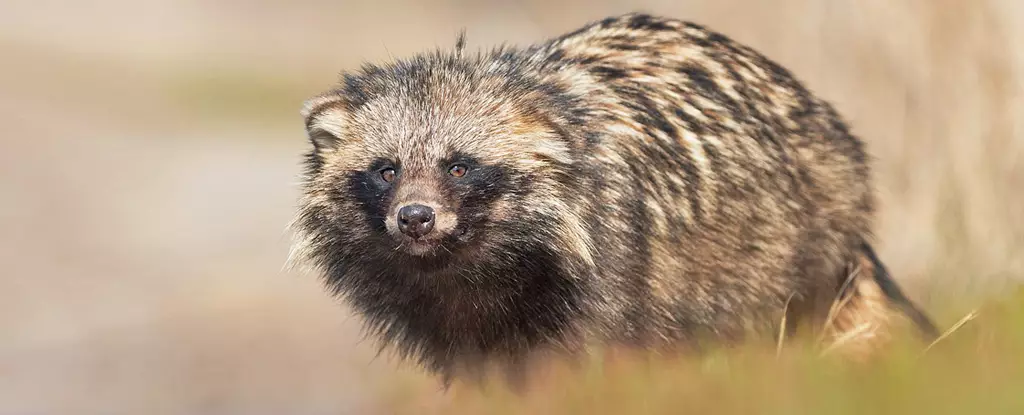The COVID-19 pandemic has drastically reshaped the socio-economic landscape worldwide, presenting both a public health crisis and a laboratory for analyzing zoonotic transmissions from wildlife to humans. The virus responsible for the pandemic, SARS-CoV-2, is believed to have initially transmitted to humans from wildlife at the Huanan Seafood Market in Wuhan, China, in late 2019. Over recent years, investigations into the origins of the virus have become increasingly sophisticated, leading researchers to delve deeper into the specific animals that might have played a role in facilitating this zoonotic spillover.
Newly published research harnesses metagenomic RNA data collected shortly after the closure of the Huanan market, providing significant insights into the possible animal carriers of the virus. As we reflect on this pivotal time, it is crucial to acknowledge the interconnection between wildlife, human activities, and the emergence of infectious diseases that can transcend species boundaries.
The early signs of viral trouble emerged in Wuhan during a time when the city was not only known for its bustling marketplace but also housed the Wuhan Institute of Virology (WIV). This institute focused on coronavirus research, which has led to numerous theories speculating the virus’s origins—especially concerning its possible release from laboratory facilities. While claims of a lab leak have circulated widely, current scientific consensus suggests a natural origin of the virus.
Despite the lack of concrete evidence supporting the lab leak theory, curiosity about the WIV continues to fuel debates and controversies. Many virologists argue that the virus most likely jumped from animals to humans at the Huanan Seafood Market due to the unsanitary conditions that facilitate zoonotic transmissions.
In the pursuit of clarity regarding the pandemic’s origins, an international team of researchers recently conducted a comprehensive analysis of genome sequencing data previously collected by the Chinese CDC. This groundbreaking study has broadened our understanding of which specific animal species may have acted as intermediate hosts for SARS-CoV-2.
The research team’s investigation started just a day after the closure of the Huanan market, where scientists meticulously collected environmental samples, including swabs from stalls, drains, and cages. By employing metatranscriptomic sequencing, the researchers analyzed RNA and some DNA from a vast array of organisms. This data provided invaluable insights when matched against samples from early COVID-19 cases dating back to February 2020.
The analysis, eventually published in a renowned journal, revealed more than 800 environmental samples that painted a complex picture of the viral transmission landscape. While the immediate identification of potential intermediate hosts remained elusive—owing to the animals being removed prior to sampling—the genetic traces of various species, such as raccoon dogs and civets, were discovered in environments where SARS-CoV-2 remnants had been found.
In a coordinated effort, the researchers identified mitochondrial genomes of various species, connecting them to genetic remnants of the virus. While it is crucial to note that the evidence does not provide direct proof of active infections in these animals, the presence of their DNA along with SARS-CoV-2 suggests a plausible scenario of infected wildlife interacting with the environment.
Significantly, the common raccoon dog emerged as the most genetically dominant species in the samples, accompanied by traces of the masked palm civet. These findings are troubling as both species have historical links to the original SARS outbreak in 2002, raising concerns about their potential role as reservoirs for similar coronaviruses. As the findings unfold, experts underscore the risks associated with exploiting wild animals and their potential to facilitate the emergence of novel pathogens.
The study offers an essential narrative on the dynamics that precipitated the COVID-19 pandemic. It suggests that infected wildlife likely were integral to the chain of events leading to the outbreak, particularly around November 2019. Researchers emphasize that understanding this history is key to preventing future pandemics.
Despite heightened awareness of laboratory safety post-pandemic, limited action has been taken to mitigate zoonotic spillovers. Wildlife markets continue to pose significant risks, and urgent reforms must be considered to ensure that humans do not recklessly interact with potential viral carriers housed in crowded environments.
Unraveling the origins of SARS-CoV-2 is more than just a quest for knowledge; it is a crucial step toward mitigating the risks of future viral outbreaks. Continued research into zoonotic diseases not only furthers our understanding of pathogen dynamics but ultimately plays a vital role in safeguarding public health worldwide.


Leave a Reply